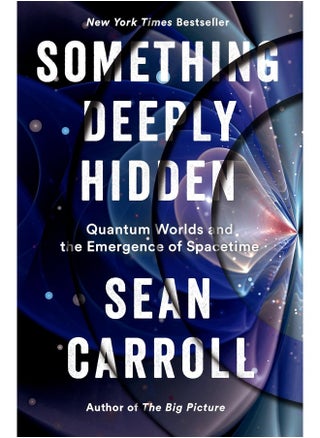| About the Author | SEAN CARROLL is a theoretical physicist at the California Institute of Technology, host of the Mindscape podcast, and author of From Eternity to Here, The Particle at the End of the Universe, and The Big Picture. He has been awarded prizes and fellowships by the National Science Foundation, NASA, the American Institute of Physics, and the Royal Society of London, among many others. He lives in Los Angeles with his wife, writer Jennifer Ouellette. Excerpt. © Reprinted by permission. All rights reserved. 1What's Going On:Looking at the Quantum WorldAlbert Einstein, who had a way with words as well as with equations, was the one who stuck quantum mechanics with the label it has been unable to shake ever since: spukhafte, usually translated from German to English as "spooky." If nothing else, that's the impression we get from most public discussions of quantum mechanics. We're told that it's a part of physics that is unavoidably mystifying, weird, bizarre, unknowable, strange, baffling. Spooky.Inscrutability can be alluring. Like a mysterious, sexy stranger, quantum mechanics tempts us into projecting all sorts of qualities and capacities onto it, whether they are there or not. A brief search for books with "quantum" in the title reveals the following list of purported applications:Quantum SuccessQuantum LeadershipQuantum ConsciousnessQuantum TouchQuantum YogaQuantum EatingQuantum PsychologyQuantum MindQuantum GloryQuantum ForgivenessQuantum TheologyQuantum HappinessQuantum PoetryQuantum TeachingQuantum FaithQuantum LoveFor a branch of physics that is often described as only being relevant to microscopic processes involving subatomic particles, that's a pretty impressive r sum .To be fair, quantum mechanics-or "quantum physics," or "quantum theory," the labels are all interchangeable-is not only relevant to microscopic processes. It describes the whole world, from you and me to stars and galaxies, from the centers of black holes to the beginning of the universe. But it is only when we look at the world in extreme close-up that the apparent weirdness of quantum phenomena becomes unavoidable.One of the themes in this book is that quantum mechanics doesn't deserve the connotations of spookiness, in the sense of some ineffable mystery that it is beyond the human mind to comprehend. Quantum mechanics is amazing; it is novel, profound, mind-stretching, and a very different view of reality from what we're used to. Science is like that sometimes. But if the subject seems difficult or puzzling, the scientific response is to solve the puzzle, not to pretend it's not there. There's every reason to think we can do that for quantum mechanics just like any other physical theory.Many presentations of quantum mechanics follow a typical pattern. First, they point to some counterintuitive quantum phenomenon. Next, they express bafflement that the world can possibly be that way, and despair of it making sense. Finally (if you're lucky), they attempt some sort of explanation.Our theme is prizing clarity over mystery, so I don't want to adopt that strategy. I want to present quantum mechanics in a way that will make it maximally understandable right from the start. It will still seem strange, but that's the nature of the beast. What it won't seem, hopefully, is inexplicable or unintelligible.We will make no effort to follow historical order. In this chapter we'll look at the basic experimental facts that force quantum mechanics upon us, and in the next we'll quickly sketch the Many-Worlds approach to making sense of those observations. Only in the chapter after that will we offer a semi-historical account of the discoveries that led people to contemplate such a dramatically new kind of physics in the first place. Then we'll hammer home exactly how dramatic some of the implications of quantum mechanics really are. |
Free & Easy Returns
Best Deals

